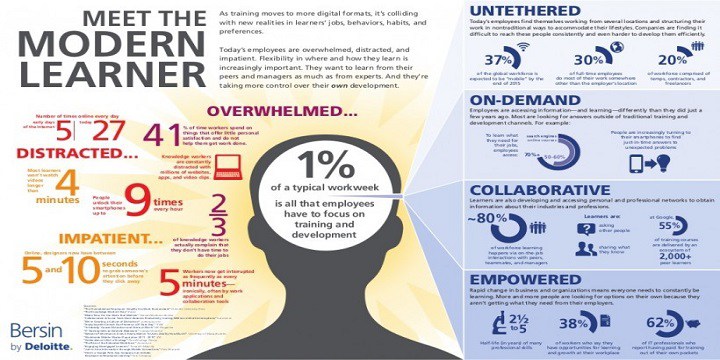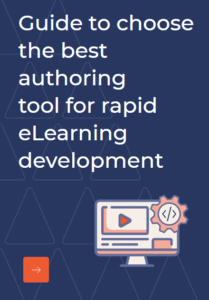It’s a pleasant week and we are back again with our scales of comparison in the comparative degree series. This time around, we are comparing two forms of eLearning models and not instructional design models.
At the very onset let us clarify that here we are strictly talking about eLearning alone and not classroom, or flipped or blended learning. So, where do we start from?
Broad Definitions
Traditional eLearning as we are all well aware of consists of various forms of media, information technology, and the web/internet to deliver learning content developed electronically. As discussed in a previous blog post, Micro eLearning is what we could call a sub-set of eLearning, the key feature being that it is bite-sized or in form of small nuggets instead of the longer versions that traditional eLearning consists of.
Purpose
Traditional eLearning has but one purpose and that is to deliver learning. It can be in form of videos, interactives, simulations, presentations, or even games. The time limit depends on the topics that needs to be covered and can be broken down into subsections within the course. It is often standalone and holistic. The primary purpose of Micro eLearning is to cover specific topic or to act as a performance support tool and provide just-in-time learning.
As a matter of fact, these days traditional eLearning is being chunked down to cater to the modern learners (some tips here).
Target Audience
The figure below should explain it to a great extent, i.e. the change in attitudes of the learners.

Source : https://elearningindustry.com/wp-content/uploads/2016/01/meet-the-modern-learner1-e1453892696549.jpg
As we can interpret from the image, the modern learner has a short span of attention. This wasn’t the case earlier. Until a few years back, most learners open heartedly completed the eLearning assigned to them. However, there sure are differences and then the fact that the learning is hardly applied, let alone retained for long.
Today with more devices than we can count, the constant travelling, lack of time and the ever-increasing competition, learning has to be cutting-edge, relevant and contextual. Micro eLearning offers just that. Though traditional eLearning will still be the backbone of learning strategies, micro eLearning can be the perfect support system to make learning continuous and allow it to be imparted completely.
Engagement
This is almost like a continuation of the abovementioned point. Short attention span also indicated another aspect- Is eLearning is just boring, or too long? There are times when too much information is dumped into an eLearning module, the learners tend to get confused or irritated when this happens. Use of micro eLearning eradicates such situations because its short, simplified and designed so that it catches the learner’s attention real fast.
Cost
Well, if we use the scales we can see that cost would be directly proportional to the length and complexity of the course. Hence, traditional eLearning evidently should cost more than micro eLearning.
It’s important to note that no matter the differences, both traditional eLearning and micro eLearning have specific applications and cannot be used as a replacement to each other in most cases. The usage basically depends on the learning requirements, the technology available and most importantly the target audience/learners.
Well, eLearning or micro eLearning we only have winners here. But, if you are stuck with your eLearning endeavors and need a push, then you know where to find us i.e info@www.knowzies.com



